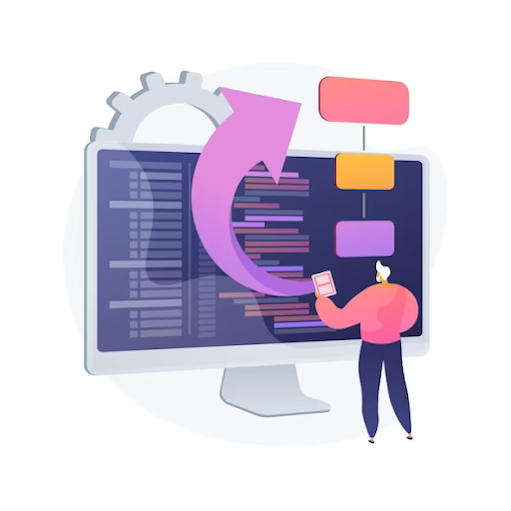Website development has become an integral part of modern business strategies. Whether you are a startup or an established enterprise, having a strong online presence is crucial for success. When embarking on the journey of web development, you are faced with various technologies and frameworks to choose from. Two prominent choices are Laravel and PHP. In this article, we will dive deep into Laravel vs. PHP to understand the differences between these technologies and help you make an informed decision when it comes to hiring a developer for your web project.
Understanding the Basics: PHP and Laravel
Before delving into the differences, let's establish a foundational understanding of PHP and Laravel.
PHP: The Scripting Language
PHP web development, which stands for Hypertext Preprocessor, is a server-side scripting language that has been a cornerstone of web development for many years. It is open-source and widely used to build dynamic websites and web applications. PHP scripts are executed on the server, generating HTML that is sent to the client's browser. Many popular websites and platforms, including WordPress and Facebook, are powered by PHP.
Laravel: The PHP Framework
Laravel, on the other hand, is not a language but a PHP web application framework. Developed by Taylor Otwell, Laravel provides a structured and robust foundation for building web applications. It follows the Model-View-Controller (MVC) architectural pattern, making it easier to manage code and develop scalable applications. Laravel website development simplifies common tasks like authentication, routing, and caching, streamlining the development process.
Now that we have a basic understanding of PHP and Laravel, let's explore the differences between them in various aspects of web development.
1. Development Speed and Efficiency
PHP: As a scripting language, PHP allows developers to quickly write code and see results. It's easy to pick up, making it accessible for beginners. However, for complex projects, PHP development can become less efficient without the structure that a framework like Laravel provides.
Laravel: Laravel's built-in features and elegant syntax contribute to faster development. It offers ready-made solutions for common tasks, reducing the need for developers to reinvent the wheel. This results in increased development speed and efficiency, especially for larger projects.
2. Code Organization and Maintainability
PHP: PHP projects can vary greatly in terms of code organization and maintainability. It relies heavily on the developer's skills and discipline to structure the code effectively.
Laravel: Laravel enforces a structured approach to development through the MVC pattern. This makes code organization and maintenance more straightforward. Developers can easily find and update specific components, enhancing the longevity of the project.
3. Ecosystem and Community Support
PHP: PHP boasts a vast ecosystem with numerous libraries and extensions available. Its extensive community support means that developers can find solutions to almost any problem they encounter.
Laravel: Laravel benefits from the broader PHP ecosystem while also having its own dedicated community. This means you can leverage the power of PHP while enjoying Laravel-specific support, tutorials, and packages.
4. Security
PHP: PHP's security largely depends on how developers implement it. If not handled properly, it can be vulnerable to common web application security threats, such as SQL injection and cross-site scripting (XSS) attacks.
Laravel: Laravel takes security seriously and provides built-in features to mitigate common security risks. It includes tools for user authentication, encryption, and protection against CSRF attacks. Laravel's security features make it a strong choice for applications that handle sensitive data.
5. Scalability
PHP: PHP can be used to build both small websites and large-scale applications. However, scaling PHP applications may require more effort and custom code as the project grows.
Laravel: Laravel's modular and organized structure makes it easier to scale applications. It encourages the use of packages and libraries, allowing developers to extend functionality as needed while maintaining code maintainability.
When to Hire a Laravel Developer vs. a PHP Developer
Now that we've explored the differences between Laravel and PHP, you may wonder when to hire a Laravel developer or a PHP developer for your project. Here are some considerations:
Hire Laravel Developer:
If you need a robust and scalable web application.
When security is a top priority, especially for e-commerce or data-sensitive projects.
For projects with complex features and functionalities that benefit from Laravel's MVC structure.
When you want to leverage Laravel's built-in tools for tasks like authentication and routing.
Hire PHP Developer:
For smaller, simpler projects with a quick development turnaround.
When you have an existing PHP-based application that needs maintenance or updates.
If you prefer flexibility in terms of code organization and don't require the full framework structure provided by Laravel.
Conclusion: Making the Right Choice
In the battle of Laravel vs. PHP, there is no one-size-fits-all answer. Your choice should be driven by the specific requirements of your web application development project. Both PHP and Laravel have their strengths, and the decision ultimately comes down to factors like project complexity, development speed, and long-term maintainability.
If you're still unsure, consider consulting with a web development expert who can assess your project's needs and recommend the most suitable technology stack. Whether you decide to hire a Laravel developer or a PHP developer, investing in skilled professionals is essential for a successful web development journey.
In summary, PHP remains a versatile and widely-used scripting language, while Laravel provides a structured and efficient framework for PHP-based web applications. Choose wisely, and your web development project will thrive in the competitive online landscape.
Remember that the key to success lies not only in choosing the right technology but also in finding the right talent to bring your vision to life. Whether you "hire Laravel developer" or "hire PHP developer," your decision should align with your project goals and requirements.










